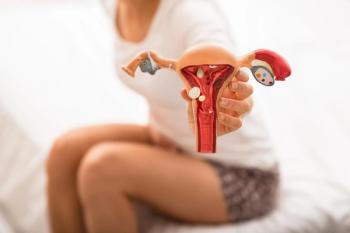
Endometriosis, ART, and pregnancy complications: Is there a connection?
Women with endometriosis who have become pregnant through use of assisted reproductive technology may face increased rates of pregnancy complications.
A new
The investigators assessed data from women who had a singleton pregnancy through ART in their facility from March 2000 to December 2014, n=631. Of the 631 women, 92 had surgically proven endometriosis: 10 were classified as revised American Society for Reproductive Medicine (rASRM) stage I and II, 31 cases were rASRM stage III, and 43 cases were rASRM stage IV; in 8 cases, the rASRM stage was unavailable. Odds ratios (ORs) and 95% confidence intervals (CIs) were calculated for the rates of preterm birth, placenta previa, and small for gestational age (SGA) using logistic regression. Odds ratios (ORs) were adjusted by number of transferred embryos, parity, and age.
The authors found that the frequency of preterm birth and placenta previa was significantly increased in women with endometriosis (preterm birth OR, 2.08; 95 % CI, 1.07-3.89, placenta previa OR, 15.1; 95 % CI, 4.40-61.7), but SGA wasn’t. In addition, rates of preterm birth and placenta previa were significantly higher in women with rASRM stage IV endometriosis when compared to women with rASRM stage I-III endometriosis (preterm birth OR, 7.40; 95 % CI, 1.83-50.3; placenta previa OR, 11.0; 95 % CI, 1.75-216.5) and women without endometriosis (preterm birth adjusted OR, 4.11; 95 % CI, 1.88-8.55; placenta previa adjusted OR, 39.8; 95 % CI, 10.1-189.1). No major difference was seen between women with rASRM I-III endometriosis and those who did not have endometriosis.
Researchers concluded that women with endometriosis were at increased risk of preterm birth and placenta previa if they had conceived via ART. In addition, the severity of endometriosis appears to have an adverse impact on an ART pregnancy.
Newsletter
Get the latest clinical updates, case studies, and expert commentary in obstetric and gynecologic care. Sign up now to stay informed.










